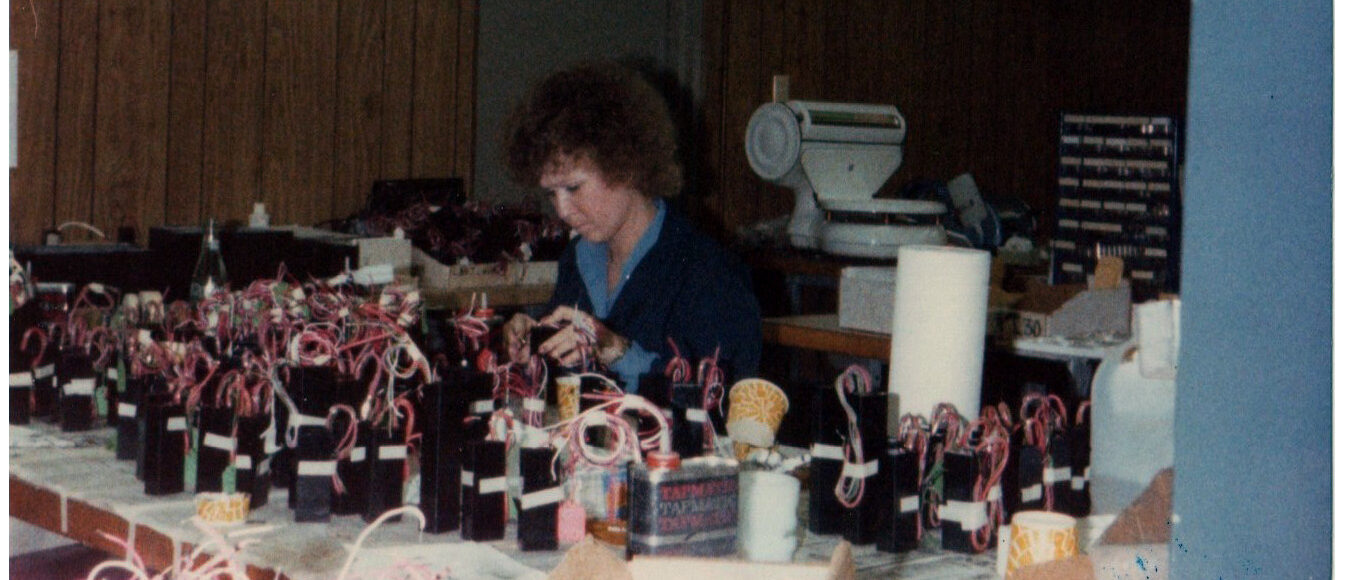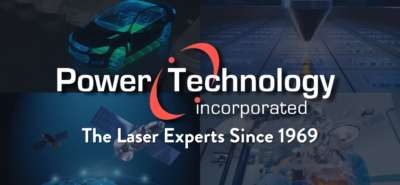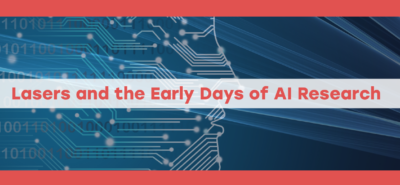Celebrating Five Decades of American Manufacturing: Our Story
Power Technology, Inc.2025-10-07T16:13:18-05:00
From Kitchen Table to Industry Leader: The Origins of Power Technology, Inc.
How a teacup-sized prototype in 1969 grew into an Arkansas-born photonics manufacturer serving some of the world’s most important industries.
1969: The Kitchen-Table Breakthrough
In 1969, engineer Thomas H. Burgess confronted a simple reality: available laser power supplies were oversized, short-lived, and expensive. On his kitchen table, he built a compact, high-voltage, switch-mode power supply for helium-neon (HeNe) lasers—shrinking the form factor from “breadbox” to teacup.
The impact was immediate. Local construction-laser maker Blount & George placed their largest-ever purchase, and Power Technology, Inc. was born—first in a two-car garage, then into a growing facility as orders scaled.

First Customer, First Principles
The first order—six units—replaced car-battery-sized boxes with PTI’s L1, roughly 2.5″ diameter × 3″ length. That focus on stability, longevity, and integration drove PTI’s rapid adoption. By the second month, the company was profitable, buoyed by small ads in early-1970s laser magazines and word-of-mouth among OEMs.
Early 1970s: From Local Jobs to National Programs
Success with HeNe electronics quickly led to R&D collaborations. Bell Labs commissioned PTI to build carbon-monoxide laser power supplies for a high-altitude balloon experiment measuring atmospheric pollution—early proof that PTI designs could survive demanding environments.
By 1973, PTI delivered the L22 (~1500 W) CO₂ laser power supply to United Technologies for a U.S. Air Force program. Multiple L22s powered a 200–600 W CO₂ laser flown on a KC-135—a milestone that foreshadowed modern airborne-laser concepts.
1970s: Innovating Across Use Cases
- Pulsed diode laser: an early product line that has remained in production through updates for years.
- 1973 American Arms International: among the first commercial laser gunsights with an integrated charger for a .22-caliber law-enforcement rifle.
- Neon-sign power supplies: integrated electronics enabling changeable text long before affordable computerized signage.
- PFS 100/200/300 Portable Fiber Splicers: developed after a Naval Research Labs request for an “arc-in-air” supply; handled larger specialty fibers that automated splicers could not—becoming one of PTI’s most profitable products of the first 30 years.
- 4.5-mile Video Communicator: an early CW diode-laser link—“ahead of its time,” as Burgess noted later.
Late 1970s–1980s: Rugged by Design
- 1977 merger with Fan-Tron: expanded capabilities with a telephone-communications engineering team.
- P80 Quad Pulser: four-quadrant pulsed driver built in a clean room to near Mil-Spec. During shake-table testing, the fixture sheared and the unit hit the floor—the laser diode shattered, but the PTI pulser kept working.
- Nuclear Test Pulser: designed for underground experiments; the laser diode was destroyed by EMP, but the PTI pulser survived.
- Industrial alignment: a laser module for a major saw manufacturer projected the cut line, improving accuracy and safety.
From Defense Labs to Checkout Lanes
By the 1980s, PTI technology was part of everyday life. The L28 HeNe power supply built for IBM supermarket scanners placed PTI electronics into most U.S. point-of-sale (POS) systems at the time. In parallel, PTI launched Laser Diode OEM systems that began replacing HeNe sources in scanning, surveying, and medical devices.
Science at Depth: Submersibles & Measurement
PTI-supported programs enabled precision measurement from the atmosphere to the deep ocean. The Alvin human-occupied submersible, emblematic of ocean exploration in the era, illustrates the level of rugged reliability demanded of supporting photonics and power electronics.

Today: Lasers Everywhere—And PTI Alongside Them
Lasers now underpin communications, manufacturing, sensing, and healthcare. From semiconductor inspection and precision metrology to medical imaging, automation, and aerospace, photonics has moved from the lab into everyday infrastructure. PTI’s role remains the same: deliver dependable photonics building blocks that make breakthrough systems possible.
PTI’s offering has also expanded via the Photonic Component Group, which distributes components from leading diode manufacturers—helping OEMs move faster from concept to production while keeping integration risk low.
Explore Benchtop HeNe Power (HCU) OEM HeNe SuppliesQuestions? Our engineers will cross-match your tube and recommend a drop-in supply: +1 (501) 407-0712.
Image credits & sources: PTI early HeNe assembly photo hosted on powertechnology.com; USAF NKC-135 Airborne Laser Laboratory (U.S. Air Force public domain via Wikimedia Commons); Supermarket checkout (U.S. government work, public domain via Wikimedia Commons); Alvin submersible (NOAA public domain via Wikimedia Commons).
All articles and publications highlighted above are the property of their respective owners.


